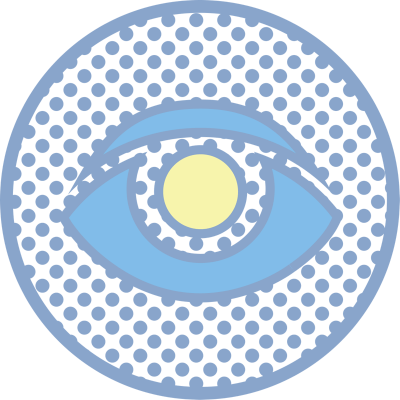Konea

What is Cornea?
Konea is the transparent outermost layer of the human eye. Technically speaking, the cornea is not a single layer; it’s made of five delicate membranes that are arranged one below the other. Cornea plays a major role in focussing your vision; its transparency and its curvy shape helps in refracting light from an object in a way that it falls at the perfect spot on the retina thereby enabling sharpness of vision. In addition to this, the cornea also acts as a protective layer preventing all the dust, dirt and germs from entering into the inside of our eyes. Now, that’s quite an important role to play, ain’t it?
Location and Anatomy of the Cornea
The cornea is the transparent, dome-shaped outermost layer of the eye that covers the iris, pupil, and anterior chamber. It plays a vital role in refracting light to help the eye focus. Anatomically, the cornea consists of five layers:
- Epithelium – The outermost layer that protects the eye and absorbs oxygen and nutrients.
- Bowman’s Layer – A tough layer that provides structural support.
- Stroma – The thickest layer composed of collagen fibers for strength and flexibility.
- Descemet’s Membrane – A thin but strong inner layer that supports the endothelium.
- Endothelium – The innermost layer that maintains corneal transparency by controlling fluid levels.
Differences Between Cornea and Retina
The cornea and retina serve distinct roles in vision:
- Mahali: The cornea is located at the front of the eye, while the retina is at the back.
- Function: The cornea focuses incoming light onto the retina, which then converts light into electrical signals for the brain.
- Structure: The cornea is a transparent, avascular layer, whereas the retina consists of multiple layers of light-sensitive cells and blood vessels.
- Role in Vision: The cornea provides initial focus, while the retina processes and transmits visual information to the brain.
Kupandikiza Corneal
When the loss of corneal transparency is the cause of visual loss, corneal transplantation is the method of choice of treatment. When whole thickness of cornea is affected or damaged due to the corneal disease, a full thickness corneal transplantation is done. The damaged cornea of the patient is completely removed and a healthy cornea from a donor’s eye is transplanted.
However, with latest advances, we are able to identify injury restricted to the thinnest layers of the cornea. Remember, the entire cornea itself is only about half a millimeter in thickness.
We can now remove only the damaged layers of the cornea rather than the whole cornea & these treatments have revolutionized the practice of eye transplantation.
Our Chairman, Prof. Dr. Amar Agarwal, has invented one of the most advanced form of corneal transplant called PDEK (Pre Descemet’s endothelial keratoplasty) to treat cases where only the innermost layers of the cornea are replaced and this is done without stitches. Since a very thin tissue is transplanted, the healing time is rapid, the risk of infection and induced astigmatism is extremely low. Plus, graft rejection is very rare. However, it is a very delicate procedure and requires the skills of an expert surgeon.

What are the Common Corneal Problems?
The corneal surface and its structure are very delicate. Any injury or infection of the cornea can lead to damage leading to loss of corneal transparency and thereby disrupting the normal vision. Common problems that affect the cornea include, corneal ulcers, keratitis (inflammation of the cornea) and keratoconus (thinning of the cornea) apart from the allergies, infections like herpes and the corneal abrasions caused by external injuries. Common symptoms produced are:
- Pain
- Reduced Vision
- Inability to open eyes in bright light
- Wekundu
- Watering
- Swelling of the eyelid

Did You Know? Fascinating Facts About the Cornea
The cornea has no blood vessels within it. It gets all its nourishment from your tears and a fluid called the aqueous humor that’s filled behind the cornea.
Corneal Treatments and Procedures
Corneal Diseases require multi-modality of medications which help in reducing the symptoms and curing the disease. Also, these diseases take a very long duration of treatment and frequent follow-ups. The most important factor for early healing and recovery is patient’s compliance to use medications religiously as per the instructions. In cases of infections of cornea, small amounts of superficial corneal tissue is removed (scrapping) and evaluated for presence of type of infection and the organism causing it. Depending on the results, specific medications for that infection are given to help faster recovery.
Maswali Yanayoulizwa Mara kwa Mara
What is the function of the cornea in the human eye?
What is the success rate of corneal transplants?
How does the cornea differ from the retina?
Where is the cornea located in the eye?
What are the symptoms of corneal problems?

Wasiliana Nasi
Tungependa kusikia kutoka kwako. Kwa maoni, maswali au usaidizi kuhusu miadi ya kuhifadhi, tafadhali wasiliana.
Ofisi iliyosajiliwa, Chennai
Ghorofa ya 1 na ya 3, Buhari Towers, No.4, Moores Road, Off Greams Road, Near Asan Memorial School, Chennai - 600006, Tamilnadu
Mumbai Office
Ofisi ya Biashara ya Mumbai: Nambari 705, Ghorofa ya 7, Windsor, Kalina, Santacruz (Mashariki), Mumbai - 400098.
9594924026